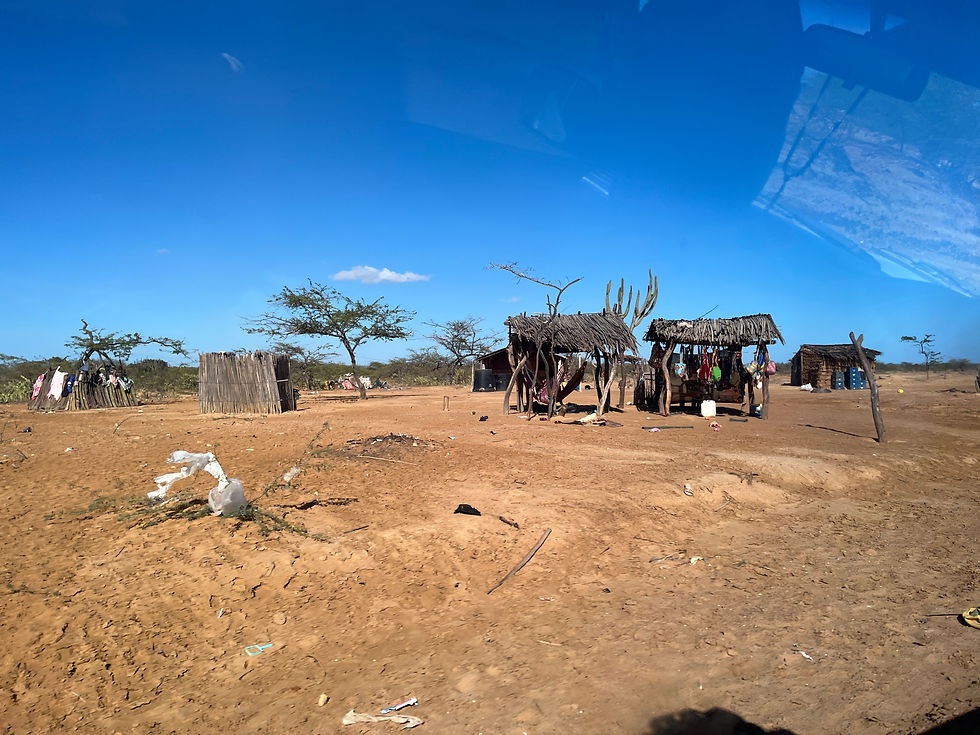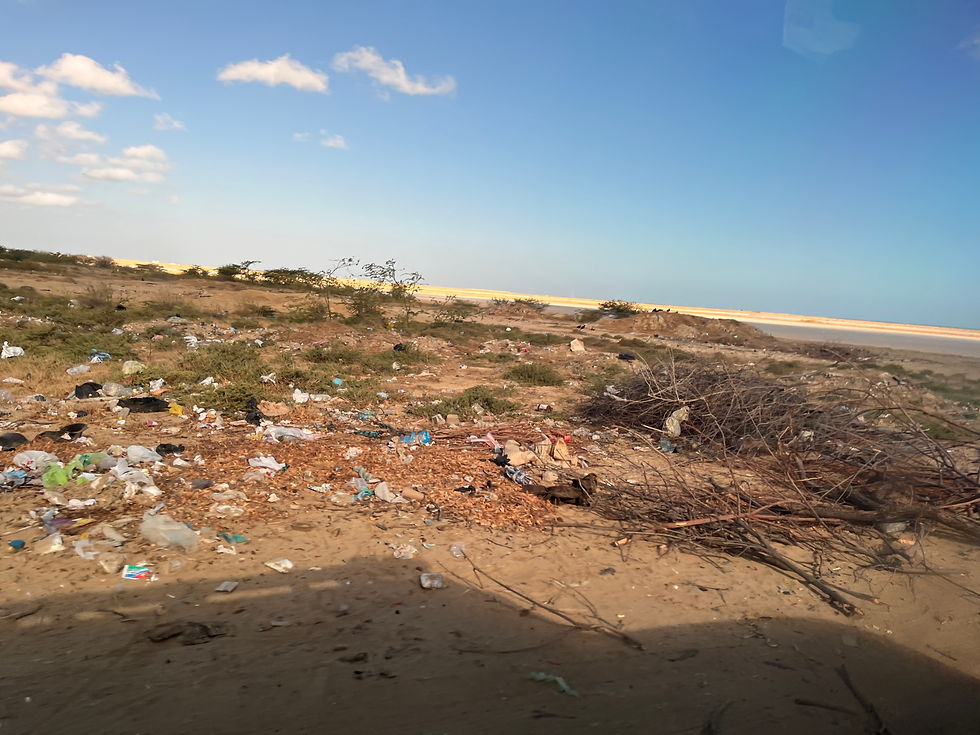Painfully Privileged
- jasey5
- May 30, 2023
- 7 min read
Updated: Jun 15, 2023

This blog post has been sitting on my metaphorical writing desk for quite some time and as the semester draws to a close I have finally picked it up again. It's not that I haven't wanted to share this story with you, but that I haven't and still don't feel fully qualified to talk about some of the things I experienced. Beyond that, my computer decided to play a little trick on me and die two weeks ago, so I have been in mourning over what sometimes feels to be my third arm. Plus, I’ve been avoiding the university computers because I was too sad and refused to use somebody else’s keyboard. I know, I know, it’s quite laughable, but this is what happens to us Computer Science kids. Also, the amount I’m struggling to adapt to the slightly different keyboard layout that I’m typing this on is really sad. Ok, enough complaining about being a sad technology ‘deprived’ kid. The rest of this blog post is going to put my little complaints into some concerningly privileged perspective.
This trip actually happened back in March, so like I said, I’ve been stalling. This trip was once again with ISA, my study abroad program and this time we went to the striking La Guajira desert. La Guajira is the northern tip of Colombia and about a 5 hr drive away from Barranquilla.

It’s a place of incredible contrast
Of dusty orange desert and 7 different colors of blue ocean
Of beauty and terrible poverty
Of love and neglect
Of windswept dunes and fields of plastic bags
Of evident privilege and blatant lack of it
Of untouched beauty and thirsty coal mines
Of determination, and evidence that sometimes that can only get you so far
Of awe and heartache and so, so much sadness

We arrived vastly unprepared for the land we were entering. La Guajira is an area that sits on the border of Colombia and Venezuela and has been home to the Wayuu indigenous tribe ever since they traded the rough living conditions of the Amazon to become the tribe of ‘sun, sand and wind.’ This community has fought to stay in this harsh land against many opponents including the Spanish, the Colombian and Venezuelan governments and now Mother Nature, or more accurately, climate change. During the independence battle between Colombia and Venezuela, the tribe fought to remain on their land and they are now free of the borders of either country. However, this has led to them not being fully claimed by either country and mostly forgotten. Traditionally, the community relied mostly on herding goats, pearl diving, craftsmanship and aquaculture, but as commercialization and fakes threaten the pearl market and ever increasing droughts and weather events threaten their food production, they have become ever more reliant on importing food and ever more in need of a source of income. For a while, they were able to buy much of their food at a subsidized rate from Venezuela but in light of their recent troubles that has dried up leaving many families without the means to buy more expensive goods from Colombia and thus leading, along with other factors, to widespread malnutrition within the community and shocking levels of poverty.

Along with fighting to survive, the community has also been fighting to keep their traditions alive. This is actually part of what has made this post hard to write because some of these traditions are rather uncomfortable to our foreign, western mindset, leaving me sitting with the weird feeling of trying to respect their culture and customs while being uncomfortable with what some of those traditions are. It’s not as if these customs are any different than the traditions our distant ancestors probably practiced, but in the modern day we have come to what we believe is a long way from dowries and isolation of girls entering womanhood. It is hard to see as well, a community so in need of resources without a means or cultural acceptance of deciding the number of children in a family. Unsettlingly, we were told by a wonderful grandma who was kind enough to share a little of her culture with us, “Is a woman even a mother if she only has two children?” Yet so many of these children are born only to wither away. Interestingly, women actually have a lot of power in this community despite what the above might have made it sound like. While the men are technically the head of the family, the women wield much of the power and the matriarch of the family is usually the one who handles negotiations with other families and is one of the only ones to speak Spanish as well as Wayuunaiki (their native language). The fact that most of the members of the family don’t speak Spanish has also been contributing to their economic struggles as many of the men find themselves unable to work beyond the community.

This community is quite resilient though and has been finding ways to support themselves. One of the places we visited was a salt farm. Here several large companies have vast salt water pools that dry in the desert sun producing about 5 crops of salt a year. In this same location, many local families also have smaller salt beds that produce beautiful crystalline pools and sparkling mountains.

Despite being only the length of a few paces these pools can produce as much as 30 tons of salt. The water in the pools is so salty that one drop on your tongue feels like it might sear right through your tastebuds. They also make the most incredible passion fruit and salt exfoliant that they had us try and my hands have never felt so soft.

The women of the community are incredible crafts people and make an item that is used across Colombia: the mochila. These crochet bags are worn by everyone and are as common as backpacks but way more fun. The patterns are usually geometrical and many of the patterns have meaning to the Wayuu. I am in complete awe of the women who make them. I asked, and they say they can make one in a week. I’ve done my fair share of crochet and with how tight and perfect the stitches are in these works of art, I am certain it would take me a couple months to make one.

Alright, It's time to discuss the title of this post and why our privilege was so painfully obvious this weekend. As you all know, this is far from my first time traveling and I’ve been to places where the people have been dealt a vastly more difficult hand of cards than I have, but I have never before been hit so hard by just how different lives can be. ISA likes to travel in style, and I can’t blame them for wanting their students to be comfortable, but in a place like this, staying in the nicest hotel in town with a beautifully tiled rain shower and unlimited water, it's really hard to feel good about your comfort. It’s hard to go down to the street and be asked by 12-year-old boys who look like they are 8, if you want to buy a bracelet and yet you already gave away all the small change you have and selfishly you want to hang on to your remaining cash for a dinner they might be going without. It’s painful to then be driven into the beautiful desert to admire its colors while the driver speeds through strings held across the road by children hoping we will stop and pay a toll in something to take away their hunger, when we brought nothing to give them. It’s hard to feel like a tourist, herded around to enjoy the views, when you are intruding on sacred land and doing so little to repay the community for your visit because you didn’t know.

I still do not sit easy with this visit. I spent the good part of an hour sitting atop a small hill, trying to count the colors of the ocean, marveling at how the crystal blue met the red sand and trying to feel ok. In the end, I bought as many mochilas as I could and gave away all the small change I had to spare and then I read. I read how the neglect of this community is considered a humanitarian disaster. I read the history on how this community has been forgotten by the governments, how they have been robbed of their water by the world's 10th largest coal mine and a dam that was supposed to help them but due to corruption, only made the wells run drier, and about the culture they have been fighting to maintain, no matter how I feel about some of their customs. Yet, it's not enough. It will never be enough, as long as I sit here complaining about not having my laptop while children are begging in the sand to stave off another day of hunger and I had nothing to give.

If you want to learn more about this community I highly recommend the movie ‘Birds of Passage.’ It’s based on a true story and directed by an award winning Colombian filmmaker. While the story itself is about a drug war (I promise Colombia is so much more than drug wars), it paints a beautiful picture of this community and many of the cultural dynamics they are fighting to save. While I’m sure there are inaccuracies, to our foreign eyes it still brings immersion in a culture so unlike our own and yet still so human. Besides, who doesn’t enjoy a good little mafia-esque story with some good questions on human nature? I will warn you though, it's rather violent in parts as you would expect from a drug war.
The movie is free on YouTube with English subtitles: https://m.youtube.com/watch?v=-dSA1bNGsqU&pp=ygUQYmlyZHMgb2YgcGFzc2FnZQ%3D%3D

If you would like to help out the children of La Guajira, we found this organization. They even sell mochilas made by the women of the community. The website is in Spanish but if you are using Crome and you click the three dots for options or right click on the page you should be able to find ‘translate.’ (here's how) Also keep in mind, their prices are in Colombian pesos so divide by about 4,400 and periods and commas are swapped. I.e. $130.000 in cop is about $30 usd: https://abaco.org.co/apadrina-un-nino/
Alright, well I hope I have handled this post in the best way that I can and I hope maybe it brings a little perspective. I know it has brought plenty to me.
Jasey
Sources:
Wooldridge, A. (2017, May 2). A brief history of Colombia’s Wayuu tribe. Culture Trip. https://theculturetrip.com/south-america/colombia/articles/a-brief-history-of-colombias-wayuu-tribe/
In Colombia’s La Guajira, the native Wayuu are forgotten in the dust. Mongabay Environmental News. (2020b, May 13). https://news.mongabay.com/2020/05/in-colombias-la-guajira-the-native-wayuu-are-forgotten-in-the-dust/

